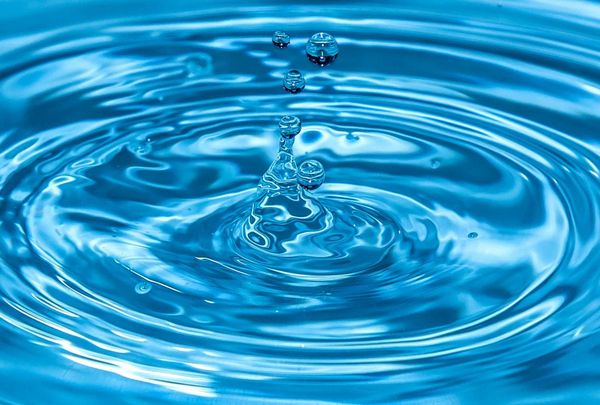- EC or electrical conductivity is one of the main things to consider when growing marijuana.
- This parameter expresses the concentration of mineral salts of the nutrient solution and is closely linked with the nutrition of plants.
- Complementary to pH (potential of hydrogen), EC is an essential value that allows to measure the concentration of the nutrients necessary for plant development at every stage of growing, directly affecting health and vigour.

What is EC?
The electrical conductivity (EC) of a water solution depends upon the ion concentration of the minerals it contains, which are categorised into two groups: anions, carrying a negative electrical charge (bicarbonates, chlorides, sulphates, nitrates and phosphates) and cations, carrying a positive electrical charge (calcium, magnesium, potassium and sodium).
EC can be expressed as siemens/metre (S/m) and ppm (parts per million), although the typical units are millisiemens/centimetre (mS/cm) and microsiemens/centimetre (µS/cm). Results will differ greatly depending on the ion composition of the solution.
The temperature of the solution, which also varies depending on the ion composition and concentration of the solution, plays a major role when it comes to electrical dynamics - each ion has a specific conductivity (of about 0.8 µS/cm per 1 gram of ions per litre).

Measuring the EC is essential in cannabis growing as it provides information on the mineral concentration of the nutrient solution, allowing to apply the fertilizers (minerals) accordingly and ensuring the proper development of plants.
A good starting point is knowing that the electrical conductivity of distilled water is 0. When the EC of a solution is high from the outset (over 0.6-0.7), you can use osmosis filters. But if the mineral content - and thus the EC - is low, the water won't be able to generate the conductivity needed for the nutrient solution, generally because of a deficiency of micronutrients such as calcium and magnesium, which you will have to add yourself in order to reactivate nutrient uptake in plants.
Testing the water before you start growing will also save you a lot of trouble, as it will give you detailed information on the composition of the irrigation water.
EC differences in soil and hydroponics
Most of the growers who grow on soil don't measure the EC of the nutrient solution. This is because soil mixes are generally enriched with organic manures such as bird or bat guano and vermicompost, which virtually eliminate the risk of EC problems. This type of substrate is rich and nutritious, generating the required conductivity. When using nutrient-poor substrates such as Lightmix, though, measuring the EC becomes essential, as the plants will require to be fertilized with mineral or organic nutrients. Otherwise, they would soon show signs of deficiencies. Using an EC meter is therefore a great way of maximizing the potential of your soil crop.

But things get trickier in hydroponics - inert growing mediums such as rockwool, coco coir and expanded clay granules - and aeroponics. Because of their inert nature, these growing mediums do not contain any nutrients and thus the plants have to be fertilised with mineral nutrients throughout the entire growing process, always having in mind the different stages of their life cycle and their specific nutrition needs. And you will definitely need an EC meter if you want to accurately control the amount of nutrients you feed your plants in hydroponics.
Why you should always know the EC of the substrate
The EC provides vital information on the mineral salt concentration of the substrate - and thus on its health - as well as on the nutrient uptake capacity of plants. If the substrate is salt-saturated, the metabolism of plants decreases gradually and overfetilisation occurs (reverse osmosis), giving rise to visual signs on the leaves - burns, claw leaves, desiccation, etc. This is why you should regularly measure the EC of the excess solution drained from the watering circuit.
The first thing to do before washing the roots and substrate is to measure the EC, making sure the value is considerably higher in the solution drained form the substrate than in the original nutrient solution. Next, you will have to water each pot with three times their water volume or apply 3 waterings with the same water volume as the pot. Adjust the pH according to the growing stage and to the substrate and consider using enzymes, particularly in hydroponics, as they contribute to the rapid dissolution of mineral salts. Measure the EC of the solution drained from the substrate once again and focus on the results.

EC values that fall within the admissible interval will be a sign that the roots are in good condition and can assimilate nutrients properly. So keep using enzymes - at the dose recommended by the manufacturer - about two times a week and cut down slightly on fertilizers to the stabilize the results.
EC problems are common in hydroponics, particularly when growing strains that require a high EC over a long period of time, so be meticulous and apply enzymes regularly - at least once a week - as a preventive measure. Even if less frequent, the problem may arise also in soil (with an EC of about 2.3-2.5).
As a general rule, you can apply the following formula:
EC of drained water – original EC = excess EC
Original EC – excess EC = EC value for the next watering
Example: EC of drained water 1.6 – original EC 1.2 = 0.4 excess → Original EC 1.2 – excess EC 0.4 = 0.8 (EC value for the next watering)
Choosing the EC meter
There are two types of electronic EC meters, compact EC meters and continuous EC meters, both of which are fitted with a probe and an electrode for the accurate measurement of the electronic conductivity of the water solution.
- Compact EC meters: Lightweight, compact and battery operated, their small size is definitely their main advantage. The probe is integrated in the central unit and EC is generally expressed as millisiemens (mS) or parts per million (ppm). They are cheaper that continuous meters but require weekly calibration for accurate readings.

- Continuous EC meters: Stationary and power operated, continuous EC meters work through a mobile probe that is dipped into the nutrient solution tank. The probe is not integrated in the central unit, which can be placed to the user's preference. Although higher in price, continuous EC meters are more stable and sophisticated than compact EC meters, allowing for longer calibration intervals. Further, they offer greater durability and provide ongoing information on the EC value of the nutrient solution.

What is reverse osmosis?
Just like any other plant, cannabis plants feed through their roots, which absorb water and mineral salts ensuring the plants' full development. This happens when the EC of the substrate is lower than the EC of the roots. Otherwise, things get complicated and reverse osmosis occurs, that is, a situation in which the EC of the substrate is higher than the EC of the roots.
In such a case, the plant starts to drain water through the roots as a biological protective mechanism aimed at gradually diluting the excess mineral salts present in the substrate, which invariably results in the dehydration and subsequent death of the plant.
This is why you should monitor the development of your plants very closely. Watch, listen and be close to them so that you can identify any deficiency symptoms when they first appear and respond quickly.
What is the role of water temperature?
There are a number of elements that can alter the EC values: The pH, the mineral salt concentration, the oxygen purity and the temperature of the nutrient solution. This directly stimulates its aeration determining the nutrient uptake capacity of the plants, which will be higher or lower accordingly.

The ideal temperature for optimum nutrient uptake ranges from 18 to 22 ºC, decreasing sharply when temperatures are too cold (under 10 ºC) or too high (over 30 ºC). This leaves us with only one conclusion: An oxygen deficiency in the nutrient solution results in slower plant development and in the subsequent rotting of the roots and suffocation of plants, which eventually die.
We hope to have shed some light on the importance of the synergy between the different elements that allow you to better monitor your crop and get plenty of delicious buds. Enjoy your grow!



Comments from our readers
The ec values you indicate for auto flowering, 1.4-1.6 for veg and 1.6-1.8 for flowering, are these figures for growing in soil or coco? Or is it the same for both? Thanks for your help Walter
Hello, this information is correct for a soil-based crop, it's slightly different if your work with coco fibers. Regards !
Good post. Do you recommend the same EC ranges for autoflowers? If the autoflowers are run under under continuous light (24/7), does the EC range change? Thanks!
Hello,
When growing autoflowering strains, we recommend the following range for water EC:
- vegetative stage: 1.4 - 1.6
- flowering range: 1.6 - 1.8
These values are indicative, and should be monitored regularly in order to be adapted if necessary.
We recommend growing autoflowering strains with a 20-4 light regiment, instead of 24 hours of light.
Best regards
Dinafem Seeds
Read comments in other languages:
Did you like this post?
Your opinion about our seeds is very important to us and can help other users a lot (your email address won't be made public).